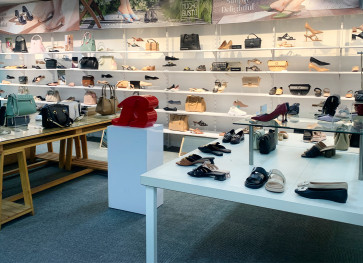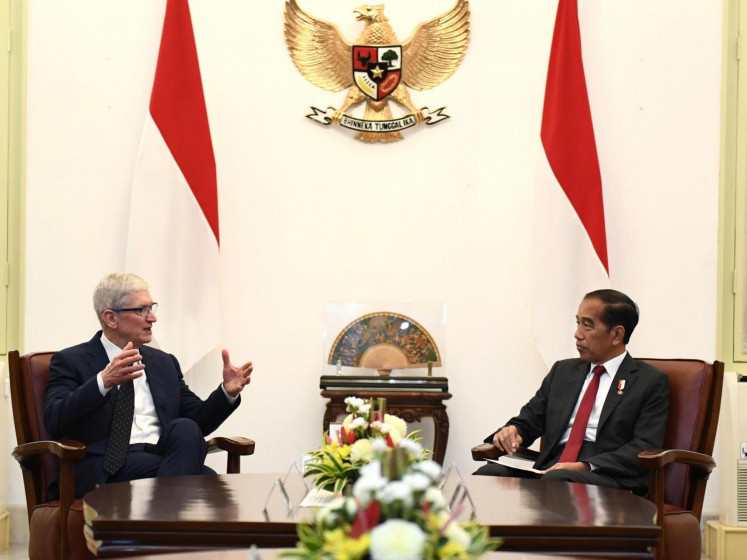Brands with personalities
In the early part of the 20th century, most consumers did not understand what a brand or branding was
Change Size

I
n the early part of the 20th century, most consumers did not understand what a brand or branding was.
In the early days of commercialism, a product was just a product. People did not understand the concept of a brand and branding. If they knew about brands at all, they knew that a brand was simply a name given by the manufacturer and attached to a product. The brand was only perceived as a label.
But as time went on and consumers became more aware and curious about things that revolve around them, the concept of a brand has become more common and is no longer seen as solely a name or label of a product.
For American consumers, it all began in the 1960s when companies started to realize that they had produced similar products and needed to differentiate themselves from their competitors.
They then tried to convey advertising messages that created an emotional connection between the product and the consumers.
This approach was a big success. From then on, companies changed their paradigm on how they treated their brainchild.
A product was no longer a tangible object, and a brand was no longer a label; it has adopted more human characteristics.
Later, this approach became popular in other side of the world including Indonesia. More companies in the world started producing not products, but instead creating brands.
In today’s world, companies and brands have become more advanced in order to attract consumers who are also more clued-in.
They have elevated brands to the next level of stealing consumers’ hearts. Brands are becoming more like humans. They have adopted human-like traits and embrace qualities such as kindness, warmth, or simply humor.
The reason why brands have adopted human traits is because the majority of purchases by consumers are emotive buys. Emotive here means that most consumers consider the emotional aspect besides the functional.
They tend to choose something that provides a familiar feeling for them. That is why companies create personalities that we all recognize in their brands.
The majority of examples of ‘humanized’ brands are in the food and beverage industry where consumers are the end-users.
Take Coca Cola for example. Coca Cola or Coke is a brand that has been humanized for quite a long time. The company that produces Coca Cola never communicates Coca Cola as being a refreshing carbonated drink. Coca Cola is positioned as part of daily life.
To complete this positioning, it has been given a personality, that of being fun and joyful. Consumers, therefore, will perceive Coca Cola as a fun and joyful brand that is part of their lives.
It is more like a friend to the consumer, and establishes relevance. Consumers tend to choose something that is familiar to them because it resembles human-like traits.
However, humanizing a brand is not achieved purely by giving it human traits or personalities and waiting for the consumers to choose. This personality should be present in every single touch point between the brands and the consumers to maintain consistency.
One of the most important touch points is the communication tools.
We know that human beings communicate. But how do brands communicate with consumers?
It sounds almost impossible.
Since brands have been humanized through their perceived personalities, they also should be able to communicate in the way human beings communicate.
With the rise of social media, brands can communicate and interact with consumers easily. Now they can be ‘friends’ with the help of popular networks such as Facebook or Twitter.
By keeping the personalities they have present in the communication, consumers will be more easily connected and engaged into conversation.
This is because they will feel that the particular brand is indeed their friend. From this point, brands can build conversation and develop a stronger emotional bond with the consumers.
L’Oreal Men Expert is a brand that has successfully maintained consistency in its human-like personality traits in its communication through social media.
Since L’Oreal Men Expert positions itself as a brand that cares and knows what is best for men, in social media they maintain this approach by discussing men’s concerns only.
This is a good example of how a brand maintains its personality and consistency at every touch point.
After all, having brands with human traits can create an emotional attachment with the consumers which is very important in today’s world of commercialism.
However, these brands should remain consistent by maintaining their personality throughout the touch points between the brands and consumers.
The writer is a Brand Consultant at DM IDHOLLAND.









